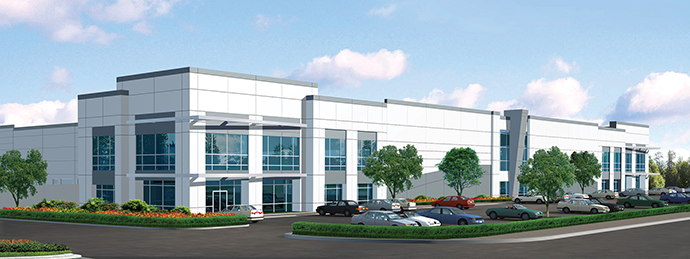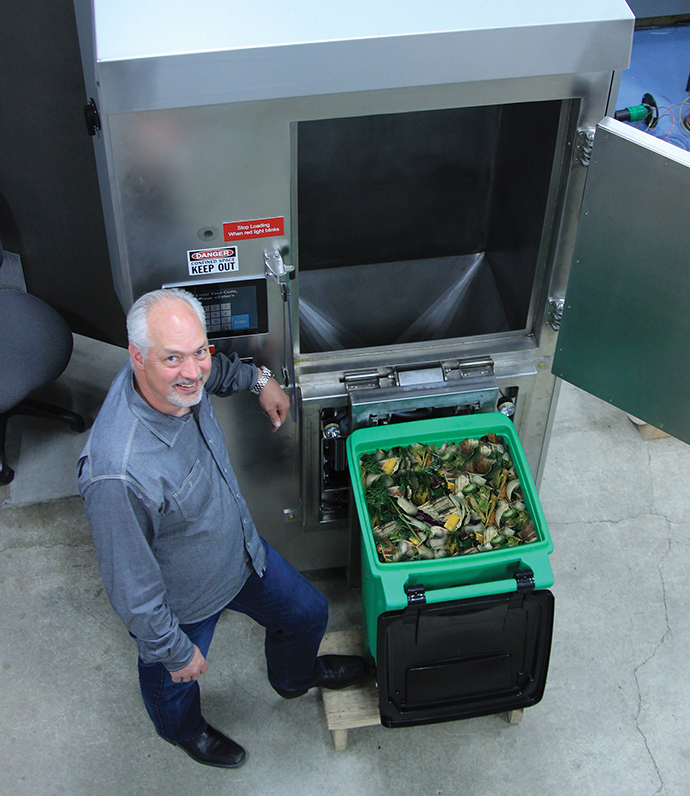
Large industrial tenants are taking up huge blocks of space in San Bernardino County as market conditions ripen for a new golden era of growth in southeastern California.
Virtually all parts of San Bernardino County, the largest inland mass in the US at more than 20,000 square miles, are experiencing significant gains in industrial space absorption as end-users seek a haven from higher costs and limited real estate options in Los Angeles and Orange County.
Increasingly, these tenants are finding the perfect combination of location ingredients to suit their needs in places like Ontario, Redlands, Rialto, Chino, San Bernardino, Fontana and other hot markets in San Bernardino County. With a population of more than 2 million and a workforce approaching 1 million, the county is no longer the wave of the future; it is the location of choice of the moment.
Among those hot locations right now is the High Desert region of Victorville, Hesperia, Adelanto and Apple Valley. Stirling Capital Investments recently announced full lease-up of its new 447,740-sq.-ft. facility being completed at the Southern California Logistics Centre in Victorville.
Arden Companies signed a 211,000-sq.-ft. lease to make outdoor cushions, furniture and other home décor. “Arden needed to move its manufacturing hub into a cost-effective, state-of-the-art space and this new Stirling facility fit all of our parameters,” said Cecil Kearse, CEO of Arden. “Assistance from the City of Victorville and the county make the region extremely conducive to businesses of our type.”
The second major lease at SCLC came from Newell Brands, formerly known as Newell Rubbermaid, which expanded its presence at the logistics park by adding 233,740 sq. ft. of space to the facility it has operated there since 2007. Newell now takes up more than 800,000 sq. ft. on site.
“The story here is similar to what you would hear in all of the Inland Empire,” says Brian Parno, chief operating officer of Stirling. “There is increasing demand and no new supply coming on the market in the High Desert. The vacancy rates are extremely low. Everyone wants to take a crack at it.”
The SCLC and the High Desert boast several location advantages, he notes. “We have a competitive cost base, an abundant workforce, lower than normal power rates offered by the municipal utility, and a development that caters to industrial manufacturing and warehouse buildings.”
A decade ago, not many people were looking to the High Desert for new industrial product, Parno says. Now they are. “This is becoming a proven location for large companies. No one is pioneering anymore. We are reaching critical mass with 1.5 million sq. ft. of new product delivered. We have fully arrived.”

Changing conditions in Southern California have prompted industrial space users to go eastward. “Basically, it is the result of continued absorption and rising rental rates in the region,” Parno says. “This is now a cost-effective solution, and that means total cost of occupancy. The bottom line is that if you are a Fortune 500 company, you are now considering our location, whereas 10 years ago you weren’t. The High Desert is now accepted as an emerging mainstream industrial location.”
Workforce drives much of this activity, he notes. “We still have upward of 50,000 people a day driving down the highway to the lowland area for jobs. That is a labor supply of 50,000 people who would rather work closer to home. And there are new housing projects going up to accommodate them.”
The quality of product impresses tenants, he adds. “We have built 3.5 million sq. ft. of Class A institutional-grade product here. You could put these buildings in Irvine or Alliance in Texas. We have had no problems relocating companies to the High Desert.”
Industrial Tenants Heading East
Bob Hess, executive managing director for Newmark Grubb Knight Frank, says that projects like the Southern California Logistics Centre are a sign of the times in San Bernardino County. “The overall health of the industrial space market and the manufacturing and distribution sectors in San Bernardino County right now is very strong,” he says. “The supply-chain sector is strong. E-commerce is strong. Advanced manufacturing is strong. And the health of the market is even stronger on the warehouse side, especially for companies like Amazon.”
According to Newmark Grubb Knight Frank in Southern California, industrial market vacancies plummeted 2 percent in the first half of 2016 in San Bernardino County, which experienced 7 million sq. ft. of net absorption during that time. Some 57 percent of that absorption came from new facilities built from 2013 to 2016.
After 27 consecutive quarters of positive net absorption, the total vacancy rate for industrial real estate in the county now stands at 4.3 percent.
“There is a need in Southern California now to consolidate space. Two of our clients are looking at that exact scenario, and San Bernardino County is positioned well to capitalize,” says Hess. “The question is, where are you going to find land and the ability to have a lower cost structure? Access to talent is a driver. And in food processing, transportation is key.”
Myron Galchutt, senior managing director for Newmark Grubb Knight Frank, says that many of the newer buildings in the county have a competitive advantage over the predominantly older industrial facilities in Los Angeles and Orange County. “The newer buildings in the Inland Empire have a clear height of 36 feet versus just 27 feet in the LA area,” he says. “Plus, rental rates in LA and Orange County are much higher.”
The top three cities for net absorption in San Bernardino County through the first half of this year are Redlands, Ontario and San Bernardino, says Galchutt, adding that the top three markets for new industrial construction are Fontana, Rialto and Ontario.
“It’s important to note that transportation costs make up roughly 50 percent of the average distributor’s overhead, versus rent, which makes up only 4 to 5 percent,” says Galchutt. “Transportation costs are number one, followed by labor and then rent. San Bernardino County is always going to get a look because of where it is located in Southern California.”
Hess advises companies that are tempted to leave California to “come look at San Bernardino County first. Look within California before you look outside. Because of its geography, available land and ample workforce, San Bernardino County can be a great fit for employers needing workers with STEM skills.”
From Farm to Factory, Back to Farm
One of those employers finding the talent it needs in San Bernardino County is WISErg, a food waste recycling firm that turns today’s leftovers into tomorrow’s fertilizer.
Larry LeSueur, co-founder and CEO of WISErg, says his firm’s motto is “buy local, eat local, repurpose local and grow local.”
If LeSueur has his way, food waste will become an important resource in a sustainable chain of agriculture and food distribution not just in California, but around the world.
“Our focus is taking wasted food and mining out the resources in it,” says LeSueur, whose Colton, California-based company considered multiple locations in southeastern California before choosing a production site about 10 miles from Ontario in San Bernardino County.
“The majority of what we produce is a liquid fertilizer for use in organic crop production,” he says. “We are based in the Pacific Northwest, but California is the number one market opportunity for us. The Inland Empire puts us right in the heart of that opportunity.”

He adds that by “doing something better for society, we are aligned with the ethos at a cultural level in California and in San Bernardino County. It is part of the DNA of the people we have met here – the growers and the people we have hired for our team. This is the way they think.”
WISErg has already hired up to 60 people at its new plant in Colton and plans to hire a lot more, says LeSueur. “We expect to grow rapidly in California,” he notes. “We are located very close to the biggest rail yard in all of California, and that is huge for our logistical needs. We looked at 10 sites across different municipalities in this region. It came down to space availability, the structure of the municipalities, and the timeliness of their responsiveness. That was a key influencer.”
Workforce was critical as well. “I want people who are committed,” says LeSueur. “I am not building a software company. I want people who are grounded in reality. I am looking for someone with context.”
He says he found that caliber of employee in San Bernardino County. “What I like best about the workforce here is that they have passion,” LeSueur says. “They have great skills and great understanding of this industry. They also know the challenges associated with the drought. They know of the challenges associated with high use of chemicals. They are an informed group of passionate people who want to make a difference.”
The county government and economic development office made a difference, he says. “We love incentives, but the biggest incentive for us was the cooperation we had at the county and state level,” adds LeSueur. “The cooperation that we received was huge, and the passion of the people who helped us navigate the regulatory environment was overwhelming.”
WISErg took advantage of a startup tax incentive program through the California Governor’s Office of Business and Economic Development (GO-Biz). “It is a tax incentive payback over five years,” says LeSueur. “There are also significant incentives around agriculture and restoring carbon back into the soil. Those programs are highly attractive to us because they help us help the grower.”
This Investment Profile was prepared under the auspices of San Bernardino County government. For more information, contact the county Economic Development Agency at 909-387-9801. On the Web, go to www.sbcountyadvantage.com.

